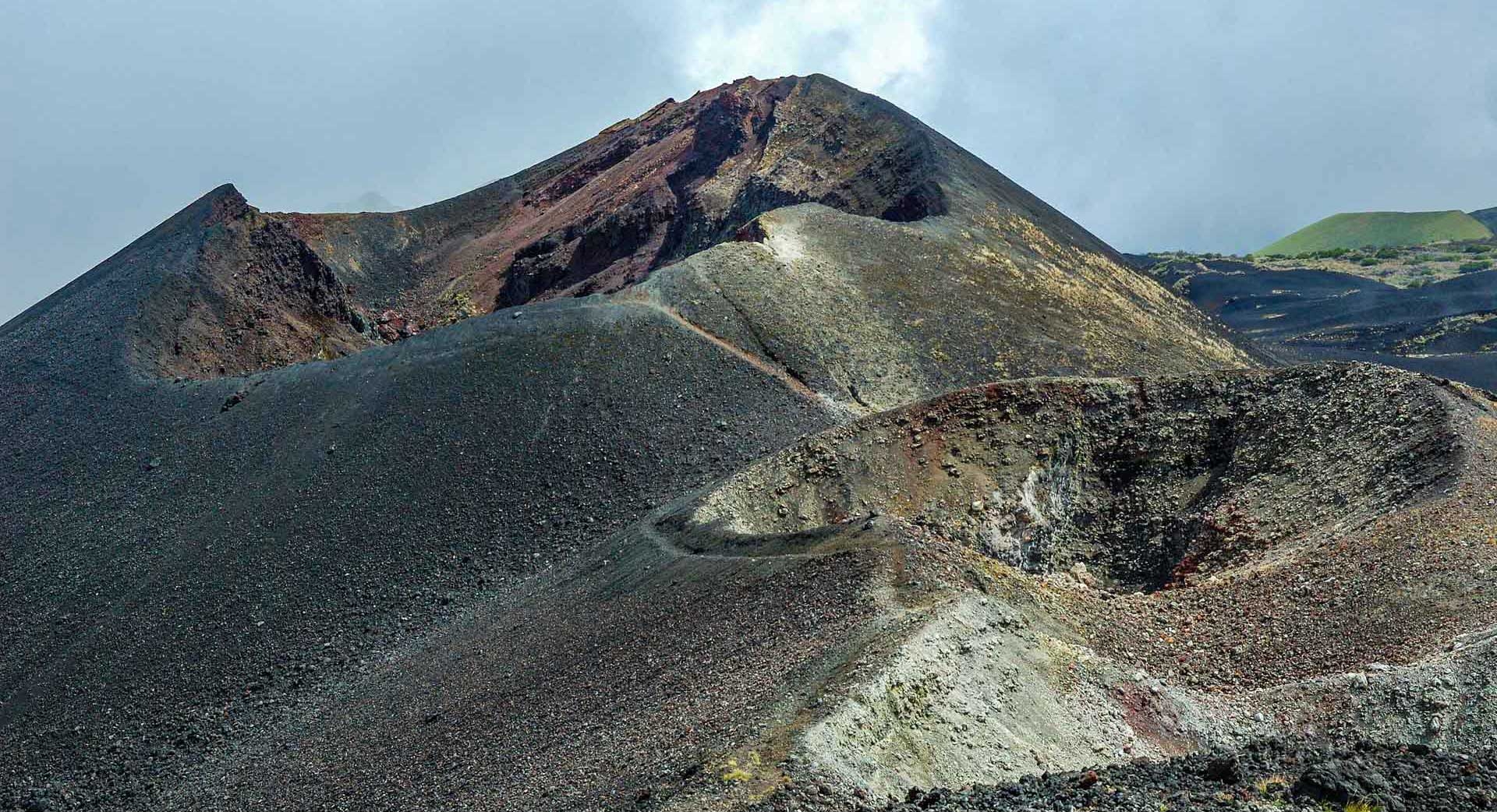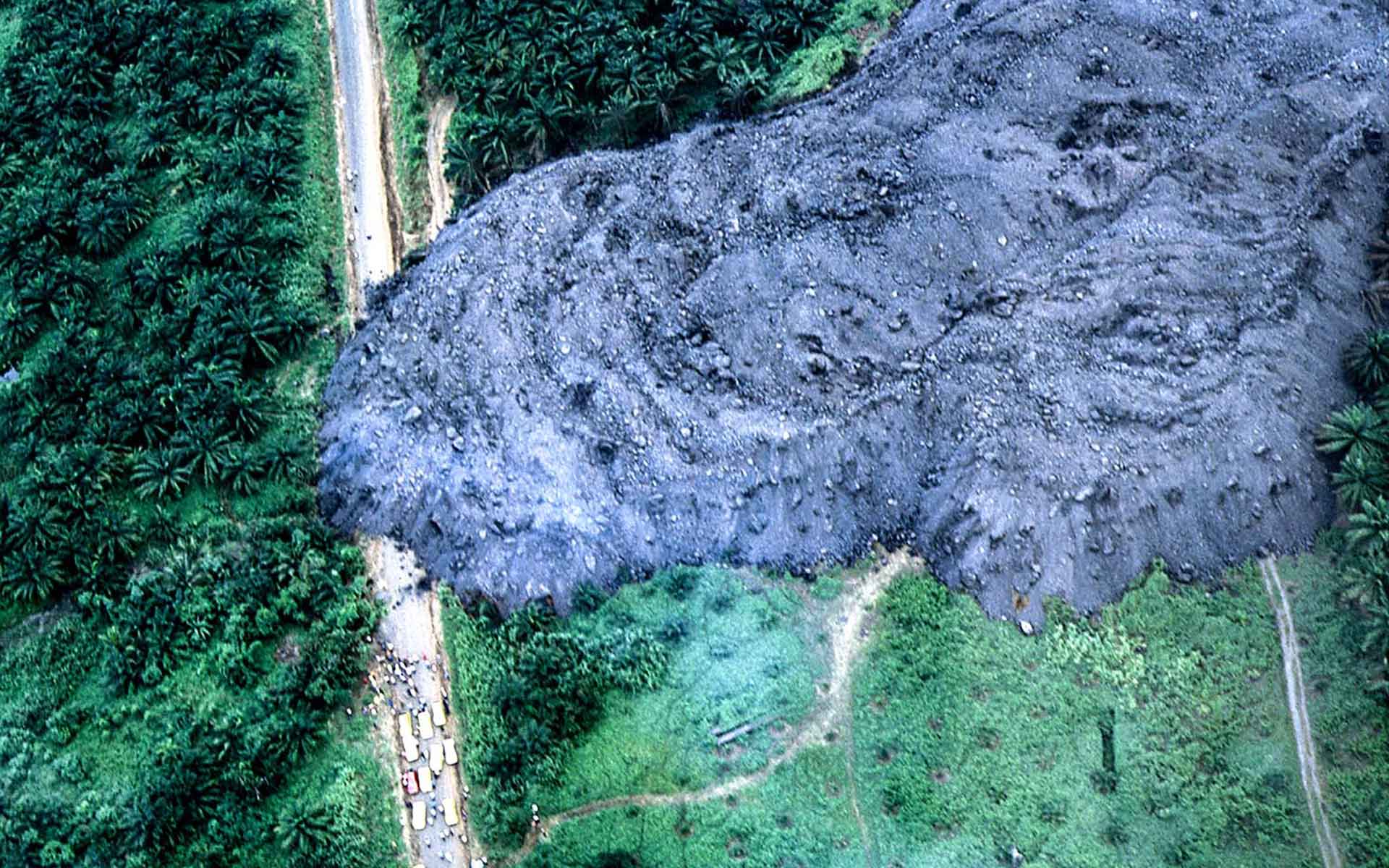
Picture of pyroclastic cones on upper slopes of Cameroon Volcano. (Photo: Michal Szymanski / Shutterstock).
Geological Period
Quaternary
Main geological interest
Volcanology
Location
South West Region, Cameroon.
4°12’55.0″N, 9°10’28.0″E
Picture of pyroclastic cones on upper slopes of Cameroon Volcano. (Photo: Michal Szymanski / Shutterstock).
One of the few volcanoes in the world located at the ocean-continent boundary in a passive tectonic margin.
Cameroon Volcano (CV) is one of the few volcanoes in the world located at the ocean-continent boundary in passive margin. It contains 300 adventive craters, reflecting its high degree of fracturing. CV is one of Africa’s largest and most active volcanoes with eight major eruptions (effusive, explosive and hydromagmatic) recorded in the last century (1909, 1922, 1925, 1954, 1959, 1982, 1999, and 2000). These events were accompanied by high intensity (VI-VII) seismic events (200/24hours during the 1999 eruptions) associated with catastrophic landslides and lahars.
- Geological description
Cameroon Volcano (CV) is a large elliptical (50×35 km wide) stratovolcano elongated in the SW-NE direction, built on a Pan-African granito-gneissic basement covered by Cretaceous to Quaternary strata (Suh et al., 2003; Tsafack et al., 2009). It culminates at 4095 m with a volume of ~1,200 km3 and includes several geological features: (1) ashes, cinders and, scoriaceous lapilli, blocks and bombs whose accumulation constructed nearly 140 cones. These cones, mainly broken, have high slopes (25-43°); (2) aa-type mafic lava emitted at the base of cones with variable widths of 30 to ~120 m, the length from 3 km (SW flanks) to ~9 km (NE flanks) and a distal front of 15 m high (Déruelle et al., 2000; Suh et al., 2003). These lavas belong to a typical alkaline series, weakly differentiated (basanite, alkaline basalt, hawaiite, and mugearite), characteristic of the interior of plates. Basanite and basalt in places possess xenoliths (1-5 x 0.5-4 cm) of dunite, wehrlite and clinopyroxenite (Tsafack, 2009); (3) Mount Etindé that is located on the southwestern flanks of CV. It culminates at 1713 m and is exceptionally composed entirely of silica-undersaturated rocks called nephelinite (Mama et al., 2021); (4) two maars (Debundscha and Bomana) respectively located at the SW and the NW slopes (Tsafack, 2009); (5) several tectonic fractures due to the alignment of cones and several vents and, rifts.
- Scientific research and tradition
Volcanic and tectonic processes coupled with natural hazards give the Cameroon Volcano unique characteristics that have aroused great curiosity on a national and international scale for over half a century. The pioneering geological and geomorphological research were from Gèze (1941, 1953). They have been followed by several works that led to the publication scientific papers till nowadays. Moreover, CV is a nature laboratory for outdoor training programs.
- Reference
Déruelle, B. et al. (2000) ‘Éruptions simultanées de basalte alcalin et de hawaiite au mont Cameroun (28 mars–17 avril 1999)’, Comptes Rendus de l’Académie des Sciences – Series IIA – Earth and Planetary Science, 331(8), pp. 525–531. Available at: https://doi.org/10.1016/S1251-8050(00)01454-3.
Gèze, B. (1941) ‘Esquisse géographique du Cameroun occidental’, Bulletin de l’Association de Géographes Français, 18(134), pp. 11–17. Available at: https://doi.org/10.3406/bagf.1941.7096.
Gèze, B. (1953) ‘Les volcans du Cameroun occidental’, Bulletin Volcanologique, 13(1), pp. 63–92. Available at: https://doi.org/10.1007/BF02596792.
Mama, N. et al. (2021) ‘Petrological and Geochemical Studies on the Si-Undersaturated Rocks of the Mount Cameroon: Genesis of the Camptonite and Nephelinite at the Cameroon Hot Line’, Open Journal of Geology, 11, pp. 239–252. Available at: https://doi.org/10.4236/ojg.2021.116014.
Suh, C.E. et al. (2003) ‘The 1999 and 2000 eruptions of Mount Cameroon: eruption behaviour and petrochemistry of lava’, Bulletin of Volcanology, 65(4), pp. 267–281. Available at: https://doi.org/10.1007/s00445-002-0257-7.
Tsafack, J.-P.F. et al. (2009) ‘The Mount Cameroon stratovolcano (Cameroon Volcanic Line, Central Africa): Petrology, geochemistry, isotope and age data’, Geochemistry, Mineralogy and Petrology, 47, pp. 65–78.
- Author(s)
Ghislain ZANGMO TEFOGOUM
Department of Earth Sciences, Faculty of Science, University of Maroua, P.O Box 814 Maroua, Cameroon


